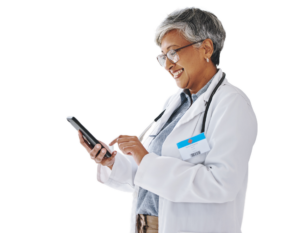The “Hospital at Home” model, also known as acute care at home, is revolutionizing healthcare by providing hospital-level care to patients in the comfort of their own homes. This innovative approach, accelerated by the COVID-19 pandemic, has shown significant benefits, including reduced healthcare costs and improved patient outcomes. However, implementing this model also presents unique challenges, particularly in coordinating care remotely.
Benefits of Hospital at Home
Improved Patient Outcomes
The Hospital at Home model targets patients with conditions such as heart failure, respiratory infections, sepsis, and chronic diseases like COPD and cancer. These patients receive comprehensive treatments at home, including IV medications, oxygen therapy, and continuous monitoring. Studies have shown that patients treated at home have lower mortality rates and fewer readmissions compared to those in traditional hospital settings (Harvard Gazette) (Healthcare Finance News).
Cost Efficiency
Providing acute care at home can significantly reduce healthcare costs by avoiding the need for additional hospital infrastructure. It also helps hospitals manage capacity more effectively, ensuring that beds are available for the most critical patients. For instance, the CMS Acute Hospital Care at Home initiative has been instrumental in scaling this model, with over 277 hospitals across 37 states participating as of 2024 (Home Health Care News) (Healthcare Finance News).
Challenges of Remote Coordination
Technology and Infrastructure
Implementing the Hospital at Home model requires robust technology and infrastructure. Reliable and secure internet connections, advanced medical devices for home use, and telehealth platforms are essential to provide continuous monitoring and care. Ensuring these technologies are available and functioning correctly in patients’ homes can be a significant logistical challenge.
Training and Support
Healthcare providers need specialized training to deliver acute care remotely. This includes using telehealth tools effectively, managing complex medical devices, and understanding the nuances of home-based care. Additionally, patients and their families may also require training and support to use these technologies and follow care plans correctly.
Communication and Coordination
Effective communication among healthcare providers, patients, and family members is crucial. Secure messaging platforms, regular virtual check-ins, and real-time data sharing are necessary to coordinate care. However, maintaining seamless communication can be difficult, especially when dealing with multiple healthcare providers and caregivers who may be located in different places.
Needs for Effective Remote Coordination
Secure Communication Tools
Utilizing secure, HIPAA-compliant messaging platforms is vital for protecting patient information and ensuring effective communication. Tools like HUB Healthcare, TigerConnect, and specialized telehealth platforms provide secure channels for real-time updates and consultations (Harvard Gazette) (Healthcare Finance News).
Integrated Health Records
Electronic Health Records (EHRs) should be integrated with home care technologies to allow seamless data sharing. This integration ensures that all healthcare providers have access to up-to-date patient information, facilitating coordinated care and timely interventions.
Continuous Monitoring
Advanced monitoring technologies, such as wearable devices and remote patient monitoring systems, are essential for tracking patient health metrics in real time. These devices send continuous data to healthcare providers, allowing them to respond quickly to any changes in the patient’s condition.
Comprehensive Training Programs
Ongoing training for healthcare providers on the latest telehealth technologies and home care protocols is essential. Similarly, educating patients and their families on how to use these technologies and follow care instructions ensures better adherence to treatment plans and improved outcomes.
Conclusion
The Hospital at Home model offers a promising alternative to traditional hospital care, providing numerous benefits such as improved patient outcomes and reduced healthcare costs. However, successfully implementing this model requires overcoming significant challenges related to technology, training, and coordination. By leveraging secure communication tools, integrating health records, utilizing continuous monitoring technologies, and providing comprehensive training, healthcare providers can effectively deliver acute care at home, ensuring high-quality patient care in a remote setting.
How HUB Healthcare Can Help
HUB Healthcare offers a comprehensive solution designed to ensure HIPAA-compliant communication in healthcare settings. With features such as secure messaging, encrypted document management, and detailed audit trails, HUB Healthcare provides the necessary tools to protect patient information and comply with HIPAA regulations. By leveraging HUB Healthcare’s robust platform, healthcare organizations can facilitate secure and efficient communication, ultimately improving patient care and operational efficiency. CMS







